(R)-Baclofen
Modify Date: 2025-08-20 21:03:49

(R)-Baclofen structure
|
Common Name | (R)-Baclofen | ||
|---|---|---|---|---|
| CAS Number | 69308-37-8 | Molecular Weight | 213.661 | |
| Density | 1.3±0.1 g/cm3 | Boiling Point | 364.3±32.0 °C at 760 mmHg | |
| Molecular Formula | C10H12ClNO2 | Melting Point | 171-174°C | |
| MSDS | N/A | Flash Point | 174.1±25.1 °C | |
Use of (R)-Baclofen(R)-Baclofen(STX209) is a selective GABAB receptor agonist. IC50 value:Target: GABAB receptorGABAB receptors are metabotropic receptors which produce slow inhibitory signals. By manipulating GABAB receptor activity using Baclofen, a variety of functions are studied including synaptic transmissions and antinociception events. |
| Name | (R)-4-Amino-3-(4-chlorophenyl)butanoic acid |
|---|---|
| Synonym | More Synonyms |
| Description | (R)-Baclofen(STX209) is a selective GABAB receptor agonist. IC50 value:Target: GABAB receptorGABAB receptors are metabotropic receptors which produce slow inhibitory signals. By manipulating GABAB receptor activity using Baclofen, a variety of functions are studied including synaptic transmissions and antinociception events. |
|---|---|
| Related Catalog | |
| References |
| Density | 1.3±0.1 g/cm3 |
|---|---|
| Boiling Point | 364.3±32.0 °C at 760 mmHg |
| Melting Point | 171-174°C |
| Molecular Formula | C10H12ClNO2 |
| Molecular Weight | 213.661 |
| Flash Point | 174.1±25.1 °C |
| Exact Mass | 213.055649 |
| PSA | 63.32000 |
| LogP | 1.56 |
| Vapour Pressure | 0.0±0.9 mmHg at 25°C |
| Index of Refraction | 1.577 |
| InChIKey | KPYSYYIEGFHWSV-QMMMGPOBSA-N |
| SMILES | NCC(CC(=O)O)c1ccc(Cl)cc1 |
| Storage condition | Store at RT |
Synonym: Section 2 - COMPOSITION, INFORMATION ON INGREDIENTS
Risk Phrases: 25 36/37/38 42/43 Section 3 - HAZARDS IDENTIFICATION EMERGENCY OVERVIEW
Toxic if swallowed. Irritating to eyes, respiratory system and skin. May cause sensitization by inhalation and skin contact. Potential Health Effects Eye: Causes eye irritation. Skin: Causes skin irritation. May cause skin sensitization, an allergic reaction, which becomes evident upon re-exposure to this material. Ingestion: Poison by ingestion. Inhalation: Causes respiratory tract irritation. Chronic: Not available. Section 4 - FIRST AID MEASURES Eyes: Immediately flush eyes with plenty of water for at least 15 minutes, occasionally lifting the upper and lower eyelids. Get medical aid immediately. Skin: Get medical aid immediately. Immediately flush skin with plenty of water for at least 15 minutes while removing contaminated clothing and shoes. Ingestion: Get medical aid immediately. Wash mouth out with water. Inhalation: Remove from exposure and move to fresh air immediately. If not breathing, give artificial respiration. If breathing is difficult, give oxygen. Get medical aid. Notes to Physician: Section 5 - FIRE FIGHTING MEASURES General Information: As in any fire, wear a self-contained breathing apparatus in pressure-demand, MSHA/NIOSH (approved or equivalent), and full protective gear. Substance is noncombustible. Extinguishing Media: Use extinguishing media most appropriate for the surrounding fire. Section 6 - ACCIDENTAL RELEASE MEASURES General Information: Use proper personal protective equipment as indicated in Section 8. Spills/Leaks: Vacuum or sweep up material and place into a suitable disposal container. Section 7 - HANDLING and STORAGE Handling: Do not breathe dust, vapor, mist, or gas. Do not get in eyes, on skin, or on clothing. Use only in a chemical fume hood. Storage: Store in a cool, dry place. Store in a tightly closed container. Section 8 - EXPOSURE CONTROLS, PERSONAL PROTECTION Engineering Controls: Use adequate ventilation to keep airborne concentrations low. Exposure Limits CAS# 69308-37-8: Personal Protective Equipment Eyes: Not available. Skin: Wear appropriate protective gloves to prevent skin exposure. Clothing: Wear appropriate protective clothing to prevent skin exposure. Respirators: Follow the OSHA respirator regulations found in 29 CFR 1910.134 or European Standard EN 149. Use a NIOSH/MSHA or European Standard EN 149 approved respirator if exposure limits are exceeded or if irritation or other symptoms are experienced. Section 9 - PHYSICAL AND CHEMICAL PROPERTIES Physical State: Solid Color: Not available. Odor: Not available. pH: Not available. Vapor Pressure: Not available. Viscosity: Not available. Boiling Point: Not available. Freezing/Melting Point: Not available. Autoignition Temperature: Not available. Flash Point: Not available. Explosion Limits, lower: Not available. Explosion Limits, upper: Not available. Decomposition Temperature: Solubility in water: Specific Gravity/Density: Molecular Formula: ClC6H4CH(CH2NH2)CH2COOH Molecular Weight: 213.66 Section 10 - STABILITY AND REACTIVITY Chemical Stability: Stable under normal temperatures and pressures. Conditions to Avoid: Incompatible materials. Incompatibilities with Other Materials: Strong oxidizing agents. Hazardous Decomposition Products: Hydrogen chloride, carbon monoxide, oxides of nitrogen, carbon dioxide. Hazardous Polymerization: Will not occur. Section 11 - TOXICOLOGICAL INFORMATION RTECS#: CAS# 69308-37-8 unlisted. LD50/LC50: Not available. Carcinogenicity: (R)-(-)-Baclofen - Not listed by ACGIH, IARC, or NTP. Section 12 - ECOLOGICAL INFORMATION Section 13 - DISPOSAL CONSIDERATIONS Dispose of in a manner consistent with federal, state, and local regulations. Section 14 - TRANSPORT INFORMATION IATA Shipping Name: TOXIC SOLID, ORGANIC, N.O.S.* Hazard Class: 6.1 UN Number: 2811 Packing Group: III IMO Shipping Name: TOXIC SOLID, ORGANIC, N.O.S. Hazard Class: 6.1 UN Number: 2811 Packing Group: III RID/ADR Shipping Name: TOXIC SOLID, ORGANIC, N.O.S. Hazard Class: 6.1 UN Number: 2811 Packing group: III Section 15 - REGULATORY INFORMATION European/International Regulations European Labeling in Accordance with EC Directives Hazard Symbols: T Risk Phrases: R 25 Toxic if swallowed. R 36/37/38 Irritating to eyes, respiratory system and skin. R 42/43 May cause sensitization by inhalation and skin contact. Safety Phrases: S 22 Do not breathe dust. S 26 In case of contact with eyes, rinse immediately with plenty of water and seek medical advice. S 28A After contact with skin, wash immediately with plenty of water. S 37/39 Wear suitable gloves and eye/face protection. WGK (Water Danger/Protection) CAS# 69308-37-8: No information available. Canada CAS# 69308-37-8 is listed on Canada's DSL List. CAS# 69308-37-8 is not listed on Canada's Ingredient Disclosure List. US FEDERAL TSCA CAS# 69308-37-8 is not listed on the TSCA inventory. It is for research and development use only. SECTION 16 - ADDITIONAL INFORMATION N/A |
| (R)-(-)-Baclofen |
| (βR)-β-(Aminomethyl)-4-chlorobenzenepropanoic acid |
| Z1YR DG&1VQ &&(R)-(-)- Form |
| (-)-Baclofen |
| Benzenepropanoic acid, β-(aminomethyl)-4-chloro-, (βR)- |
| (R)-(-)-4-Amino-3-(4-chlorophenyl)butanoic acid |
| (3R)-4-Amino-3-(4-chlorophenyl)butyric acid |
| (3R)-4-Amino-3-(4-chlorophenyl)butanoic acid |
| (R)-Baclofen |
| (R)-4-Amino-3-(4-chlorophenyl)butanoic acid |
| Arbaclofen |
| MFCD01321057 |
| (R)-(-)-4-Amino-3-(4-chlorophenyl)butyric acid |
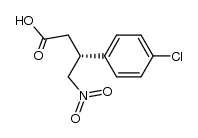 CAS#:290366-79-9
CAS#:290366-79-9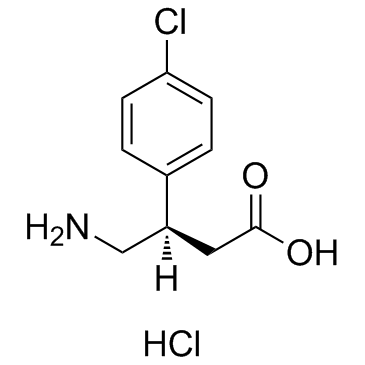 CAS#:63701-55-3
CAS#:63701-55-3![1-[(3S)-3-(4-chlorophenyl)cyclobut-1-enyloxyl]-1,1-diethyl-1-silapropane Structure](https://image.chemsrc.com/caspic/453/245662-60-6.png) CAS#:245662-60-6
CAS#:245662-60-6![(R)-ethyl 4-[(tert-butoxycarbonyl)amino]-3-(4-chlorophenyl)butanoate Structure](https://image.chemsrc.com/caspic/297/625457-56-9.png) CAS#:625457-56-9
CAS#:625457-56-9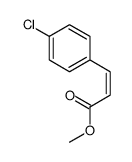 CAS#:20754-21-6
CAS#:20754-21-6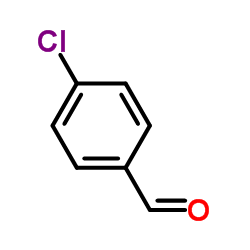 CAS#:104-88-1
CAS#:104-88-1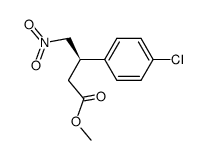 CAS#:852051-18-4
CAS#:852051-18-4 CAS#:101671-01-6
CAS#:101671-01-6